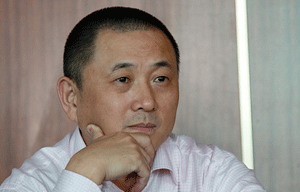HFT may be leading to increased market volatility
Updated: 2011-10-17 07:55
By Daryl Guppy (China Daily)
|
|||||||||
Global markets are showing an unusually high degree of volatility. It reflects a nervousness about the eurozone crisis and the ongoing economic problems in the United States. It is not unusual for the Dow to move by more than 2 percent between one day and the next.

During the day the market is wracked by very rapid up and down moves. However these two factors are not enough to explain the sustained increase in market volatility. Increasingly investors and traders are pointing the finger at high-frequency trading (HFT) as the main cause of this volatility. It is reputed to be behind the Flash Crash May 6, 2010, when the Dow fell 700 points in a few minutes and then rebounded rapidly. Some claim it undermines the fairness and equity in the financial system.
HFT uses computer algorithms to find trading opportunities and execute trades. This is a type of automated trading and has been around for years. This is where the computer does the trading rather than people. HFT trading developed strongly after 2005 particularly as US exchanges moved from floor-based trading to electronic trading. HFT is usually understood to mean that trades are entered and closed within a few seconds, or even milliseconds. They use the power and speed of the computer to exploit very small differences in price. Sang Lee, a US-based high frequency trader and author, says it is more difficult to define HFT by the number of trades. Some HFT firms may trade thousands of times a day but they do not trade every day. HFT trading opportunities do not develop every day, so they may be periods when it is not possible or profitable.
One defining feature is that the HFT traders usually do not carry their positions overnight, Sang Lee says. Their objective is to get in and out of the trade within a few seconds, and certainly before the market closes for the day. They are the ultimate day trader.
There are several questions that worry regulators and also investors. How does HFT trading affect the market? Does it add liquidity and make it easier for other traders and investors to execute their trades? Or does HFT trading manipulate the market and pricing to the disadvantage of other traders? And, ultimately, does HFT increase the level of volatility in markets? It is too soon to have definitive answers but some responses are emerging.
Regulators in Europe and the US have recently fined traders for using computers to gain advantage over slower investors by illegally manipulating prices. This involved placing and then rapidly withdrawing orders. Regulators are considering new rules for HFT traders. Regulators are considering penalizing traders if they send and then cancel a high number of orders. Alternatively, regulators may impose a minimum time limit for orders to remain open before they can be cancelled.
HFT looks for small inefficiencies in price. It started with the differences in latency, or time lag in price display speed, in markets. Nick Leeson, who bought down Barings Bank, used this in one part of his trading strategy. He traded the Nikkei Futures contract in Singapore, which moved a little behind the activity of the Nikkei. The difference was caused by lags in the speed of the price display from the two markets. These time-lag opportunities became smaller and smaller until it was impossible for human traders to take advantage of the split second differences. Computers overcome this disadvantage with the ability to detect these differences and trade them in milliseconds. HFT as we know it was born. The key disadvantage of HFT may be on the flip side of the liquidity created by it. When the market becomes difficult then the high-frequency traders may withdraw from the market. Instead of adding liquidity they withdraw liquidity from the market and this can help exaggerate the effect of rises or falls.
HFT may be muzzled by regulations requiring orders to be in the market for a minimum time but the forces driving the growth of computerized trading will not disappear. Even if my order must remain in place for one second, there is still a race measured in milliseconds when it comes to getting my order at the front of the line.
The author is a well-known international financial technical analysis expert
(China Daily 10/17/2011 page14)









